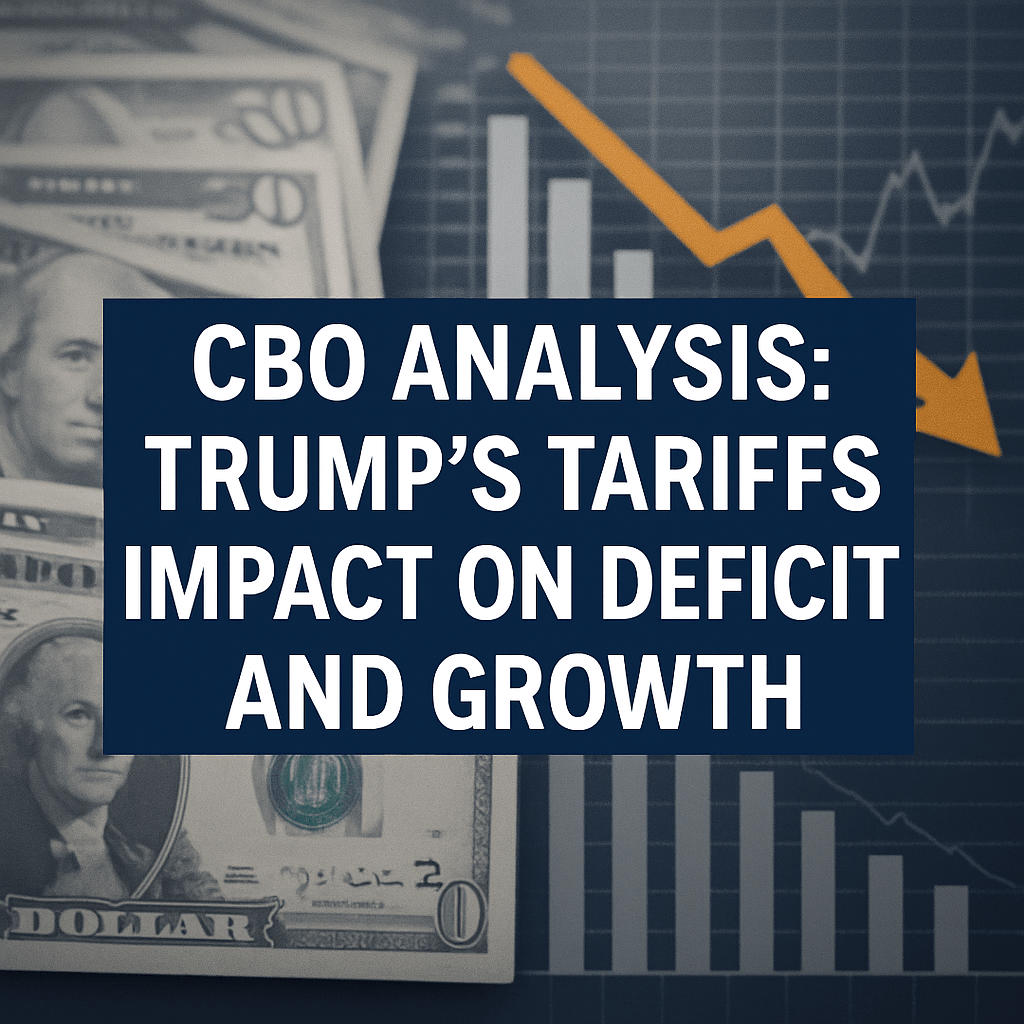CBO Analysis: Trump’s Tariffs Impact on Deficits and Growth

President Donald Trump’s ambitious tariff strategy has been met with significant scrutiny, as an analysis released by the Congressional Budget Office (CBO) outlines its potential ramifications. According to the report, Trump’s plan could lead to a substantial reduction in federal deficits—an estimated $2.8 trillion over the next decade. However, this financial benefit is accompanied by adverse effects on the economy, including diminished growth, increased inflation rates, and reduced purchasing power for American households.
Background of the Tariff Proposal
The CBO’s analysis emerged from a letter directed to Democratic congressional leaders, highlighting the implications of the Trump administration’s proposed tariffs on imports from various countries. The tariffs, which came into effect through executive actions taken from January to May, are expected to permanently alter trade dynamics between the U.S. and its trading partners. This forecast aligns with wider economic models predicting similar outcomes.
Impact on Inflation and Household Wealth
According to CBO estimates, the tariffs would eventually lead to a reduction in consumer purchases from countries targeted by the additional duties. The agency projects that inflation could rise by an average of 0.4 percentage points in both 2025 and 2026 due to the higher costs of imported goods. This increase in inflation may result from domestic companies raising prices to compensate for added tariffs, ultimately eroding household purchasing power.
- The Penn-Wharton Budget Model echoes these findings, suggesting long-term GDP could decline by as much as 6% and wages could see a drop of approximately 5%.
- The net effect of these tariffs would potentially result in a contraction in overall household wealth, overshadowing the expected fiscal benefits of the deficit reduction.
Economy Shrinkage and the GDP Trade-off
Further detailed analysis from the CBO indicates that these tariffs would shrink the economy, projecting a decrease in the gross domestic product (GDP) by approximately 0.06 percentage points annually. This could translate into an economy that is less resilient in times of global financial instability.
Judicial Developments Affecting Tariffs
In the unfolding legal landscape, a federal court recently invalidated a sweeping tariff initiative linked to Trump’s emergency powers. However, an appeals court has allowed the Trump administration to maintain tariff collections while the case is reviewed in higher courts. This legal ambiguity introduces significant uncertainty regarding the long-term implementation of the proposed tariffs.
Shifts in Policy and Consumer Impact
Historically, Trump has demonstrated a tendency to modify his tariff strategies, frequently announcing adjustments via social media. For instance, in April he made a notable change by temporarily suspending tariffs on various countries while proclaiming a steep increase in tariffs on Chinese imports, raising them to 125%. Recently, a decision was made to hike tariffs on steel and aluminum imports to a staggering 50%. These changes, effective immediately, are anticipated to exert additional pressure on businesses, leading to increased costs that consumers would ultimately bear.
Future Economic Projections
The latest forecast from the Organization for Economic Cooperation and Development (OECD) predicts that the U.S. economy, the largest globally, will experience a significant slowdown, with growth anticipated to fall to just 1.5% by 2026. Such forecasts raise concerns about the implications of maintained tariffs on overall economic stability.
Conclusion
The CBO’s report paints a complex picture of the potential economic landscape under Trump’s tariff policies. While the prospect of reducing federal deficits rings favorable, the associated economic drawbacks—including diminished growth, rising inflation, and reduced household wealth—pose significant challenges. The evolving nature of tariffs and ongoing judicial scrutiny further complicate the situation, leaving businesses and consumers alike in a state of uncertainty.
Representative responses from the White House regarding the CBO’s findings have yet to be forthcoming, indicating a potentially cautious approach to addressing these economic forecasts.